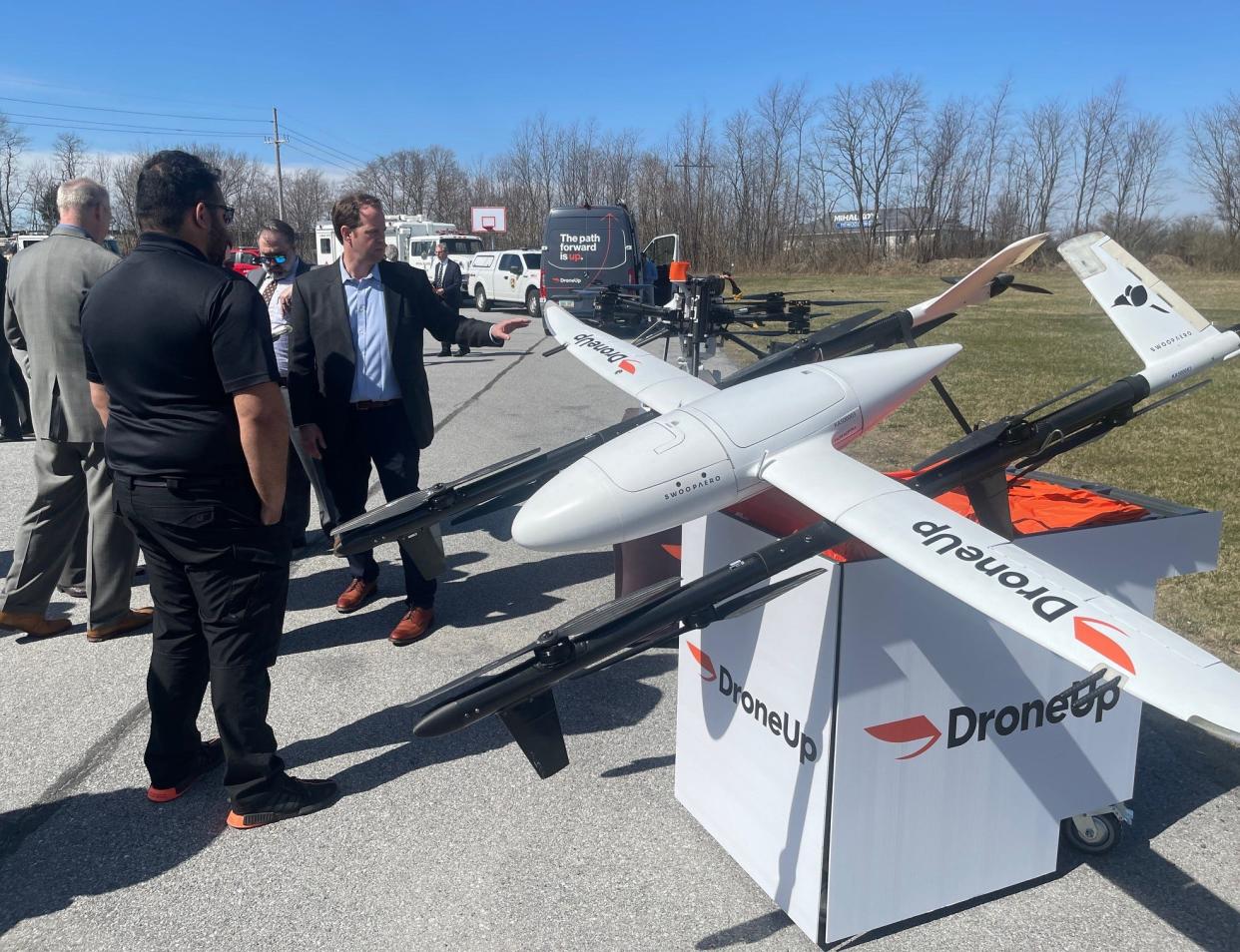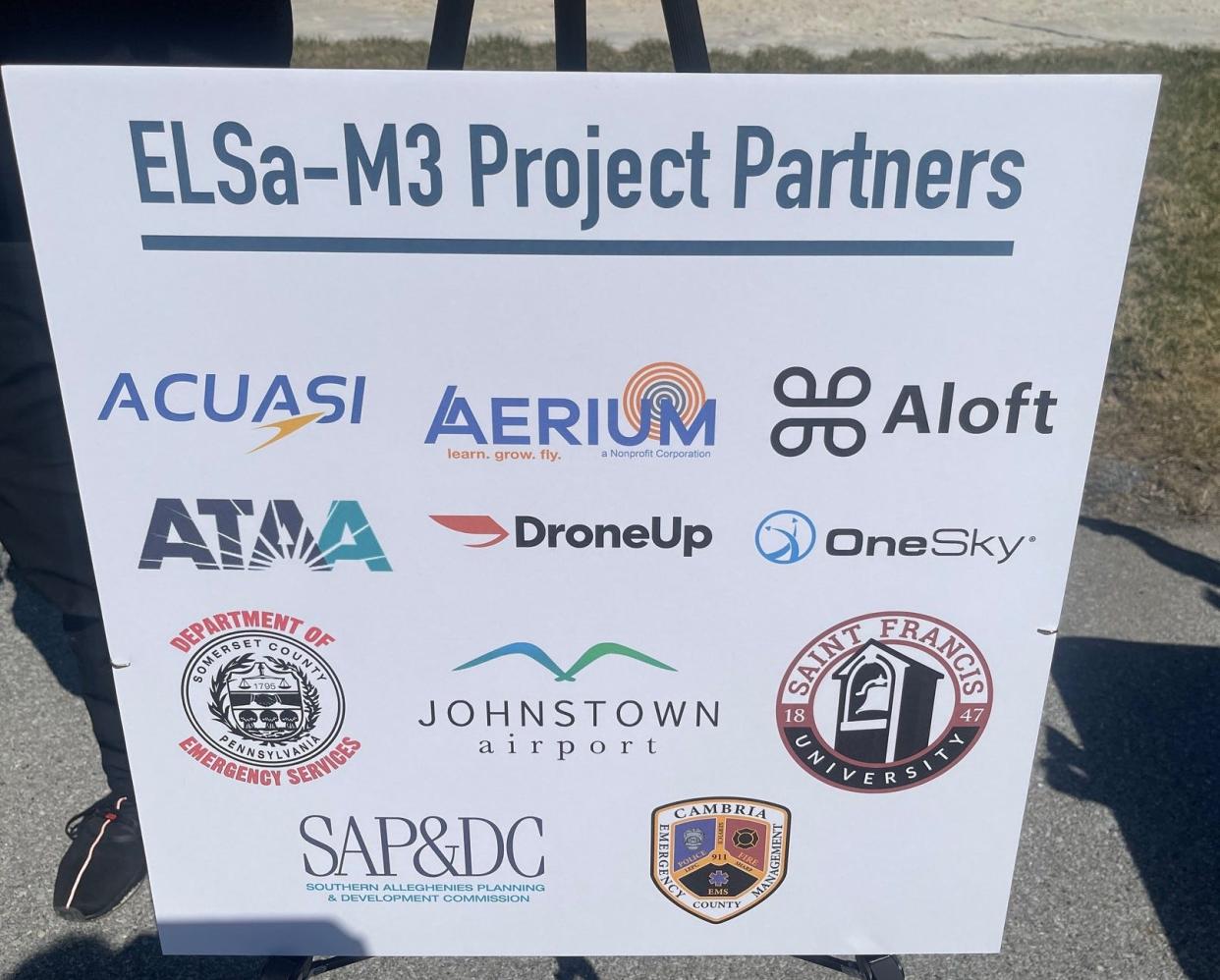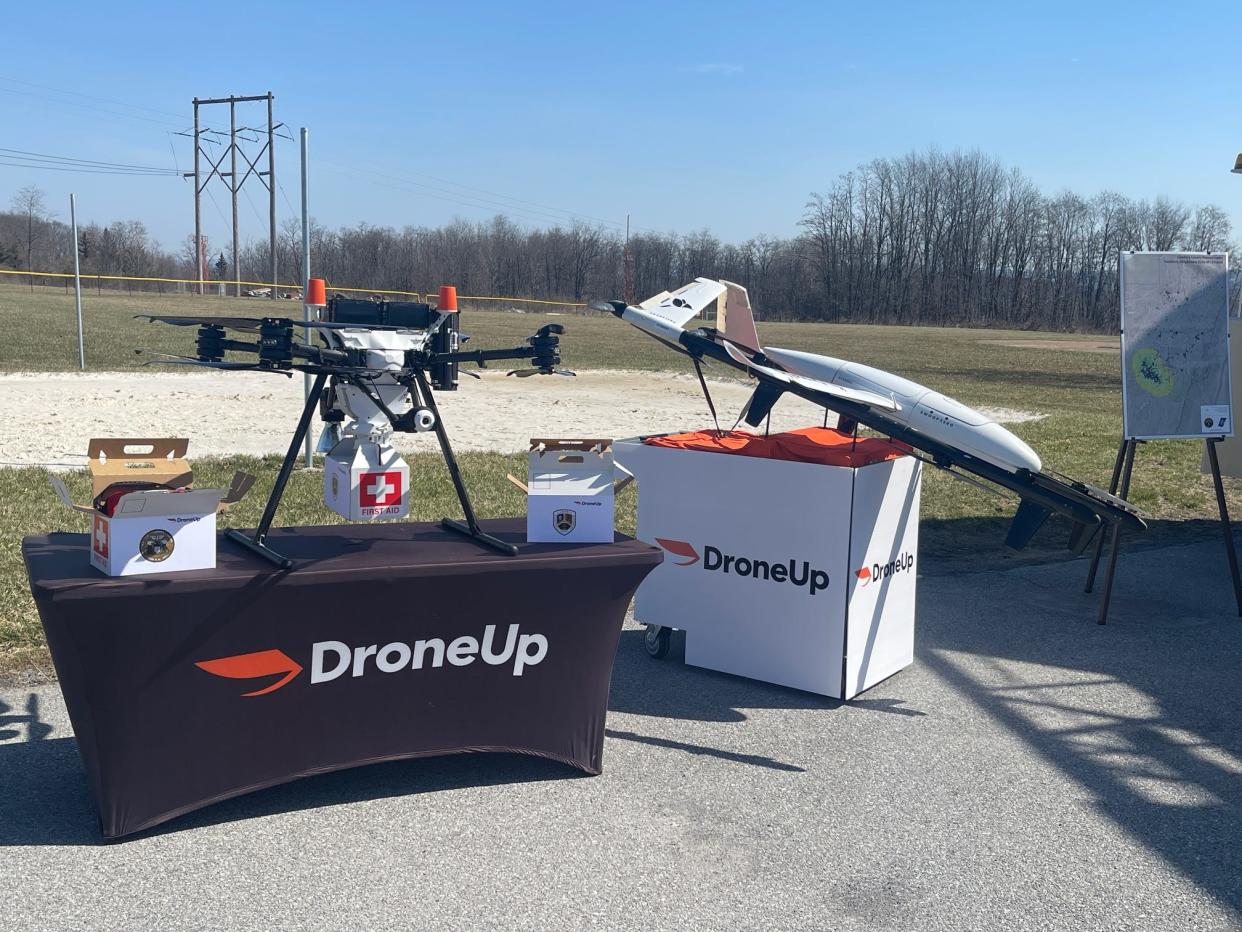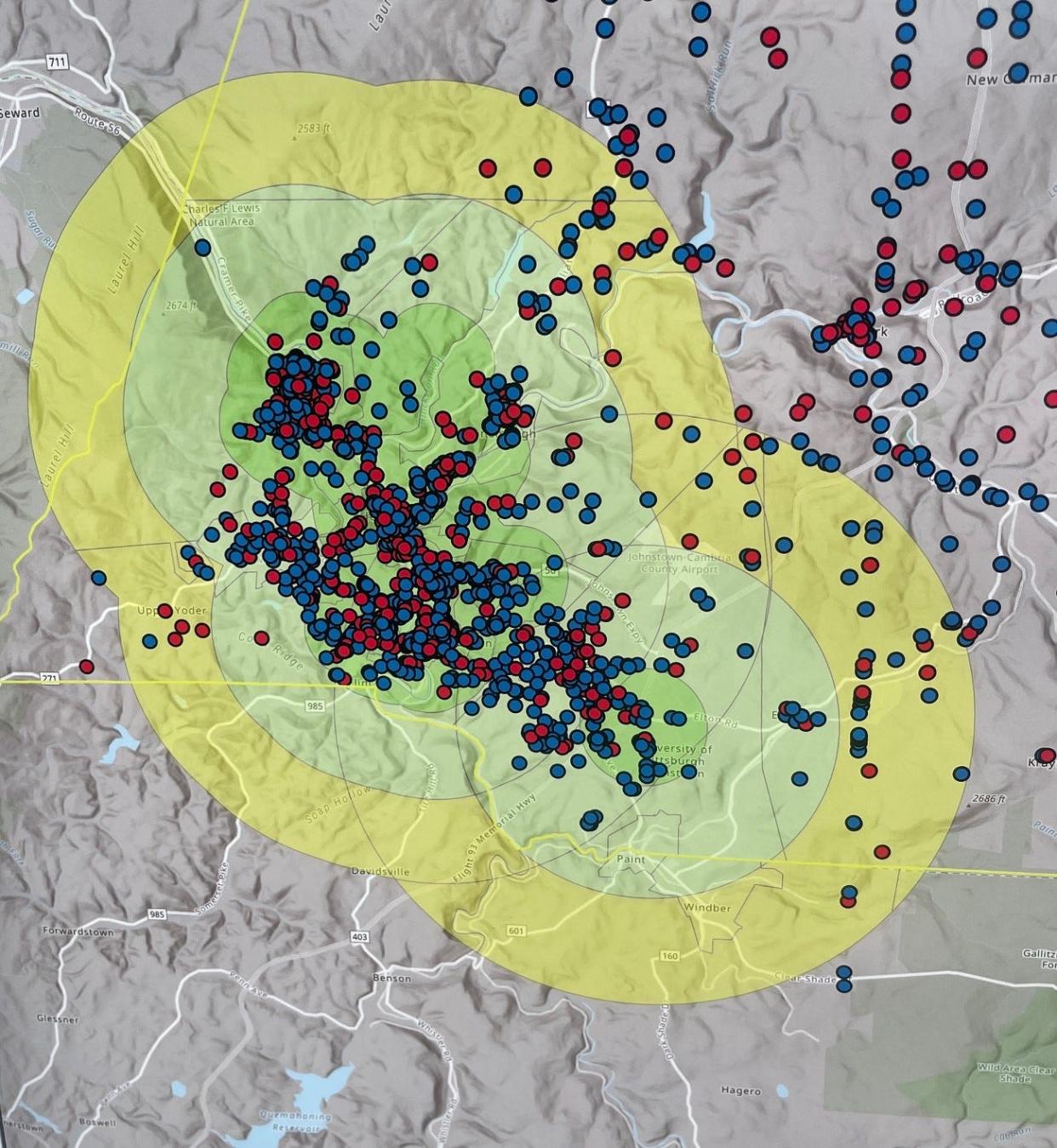Can a drone be used to save lives? A group of area organizations are working on a project to do just that.
JOHNSTOWN ― A nearly $2 million grant from the U.S. Department of Transportation is funding a project to build a network for drone delivery of life-saving medical supplies to parts of Cambria and Somerset counties.
A new purpose: What is happening at the old Daily American building? Think kids, fun, learning
On Thursday, the agency awarded a total of $54 million in grant funding to 34 projects in 22 states through its Strengthening Mobility and Revolutionizing Transportation (SMART) grants program, funding projects that are using technology to create safer, more efficient and forward-thinking transportation systems.

The local grant proposal, called Emergency Life Saving through Multi-Modal Mobility (ELSa-M3), was awarded $1,925,256 in SMART program funds. The proposal was submitted by the Southern Alleghenies Planning & Development Commission on behalf of a variety of project partners, including the Cambria County Emergency Management Agency, Somerset County Department of Emergency Services, St. Francis University, the Johnstown Airport and the Aerium Foundation.

What is the ELSa-M3 project about?
The ELSa-M3 project’s goal is to create a network of sites in Cambria County from which a drone can be dispatched to deliver an automated external defibrillator (AED), Narcan or an EpiPen to a precise location while medical services personnel are heading to the scene.
“The project we’re announcing today is really helping to improve healthcare access and emergency medical service (EMS) delivery in life-critical situations, with the support of using a drone system,” said Robert Hampshire, chief science officer and deputy assistant secretary for research and technology for the department of transportation.
“This is going to allow life-saving medicines and devices to be delivered to people in need, even before EMS can arrive. Together the system of EMS, plus the medical services, plus all the support services, is really key in the partnerships in this project.”

This project will also help determine how the nation can use drones to partner with emergency medical services, as well as other potential uses, Hampshire said.
“So we’re looking to this area, to this region, to really serve as a model here in Pennsylvania and across the country, that other places around the country can learn from, about drone delivery of medical services. This really is a ‘ground zero’ here of learning about how these services work,” he said.
The latest on this case: Bond revocation for former Somerset County 911 coordinator denied; new conditions
How will this work?
Over the rest of this year, data experts from ATA Aviation in Fredericksburg, Virginia, will work with Stephen Kocsis, Cambria County’s Geographic Information Systems director, to put together a detailed four-dimensional digital map and sensor overlay of the project coverage area, which includes Johnstown and a small portion of northern Somerset County.

“We’ve identified every pole, every building, all the tree canopy, all the dispatch sites – and when I say four dimensions, it’s because we have it on lat (latitude), long (longitude), height and time,” said John Eberhardt, managing director of ATA Aviation.
“What that will allow is everything in the air to know about everything else that is in the air, that’s how we do this safely. And when you combine that four-dimensional digital model with the countywide sensor overlay, companies like DroneUp can operate their vehicles in a safe and efficient manner and eventually in a fully automated manner.”
DroneUp, based in Virginia Beach, provides retail, food and medical drone delivery services, including a partnership with Walmart that delivers online orders to up to 4 million households in six states, including Virginia.
Greg James, DroneUp’s vice president of business development, said their company would use the county's completed digital model to set up one or more sites within that coverage area for drones to take off when dispatched by the Cambria County 911 center.
“We’ll set up operations, that include people, technology, drones, and what DroneUp builds is all the underlying software that allows us to fly from point A to point B,” he said.
“We’ve got the ability to cover multiple miles in flight very efficiently, so using some of the data that (ATA Aviation) can collect, allows us to also determine the fastest flight path.”
When the drone reaches the delivery location, it doesn’t land but instead delivers the box containing the medical supplies using a winch.
“We generally fly at an altitude of 200 feet, and as we hover over the place where we’re going to deliver, our drone drops down to about 80 feet and we deliver on a winch. We can deliver within about an 18-inch circle diameter, so when you think about precision accuracy, and exactly where somebody is getting what they need, we can get it to them,” James said.
“We’ve been doing drone delivery for several years, and currently operate one of the biggest drone delivery networks. This is a really exciting project because we’re delivering life-saving (supplies).”
Local government news: Commissioners accept another resignation, hire chief clerk
Plans to expand
Eberhardt said that testing of the drone delivery system should take place later this year, and he expects the drones to begin to fly sometime in 2025.
A successful launch of this initial phase of the project could also lead to expanding its reach into more parts of Cambria and Somerset counties and to other states as well.
“What’s also exciting is that we already have a deliberate plan to link the system here in Cambria County to efforts already underway in Virginia and northeast Ohio, which will make Cambria County the beating heart of the first nationwide advanced aerial mobility system,” Eberhardt said.
Joel Landis, director of Somerset County’s emergency management agency, said that while the project’s coverage area is currently focused on Cambria County, he’s looking forward to learning more about how this type of technology could benefit Somerset as well.
“The more populated areas of Cambria County are included in that (map), they are going to see the immediate benefit but we’re hoping that this will expand into Somerset County as well, and maybe that (coverage) area will expand based on the progress of their project,” he said.
“I’m anxious to see how this works, especially with our geographics, the mountains, the weather. I’m anxious to see how this project is going to unfold with all those variables. This is obviously being tested in other parts of the country, and our geographics are completely different than theirs, so that’s part of this picture, to use this area because of the (unique) challenges we might have.”
This article originally appeared on The Daily American: Johnstown PA project receives $2 million grant to add drones into EMS network
